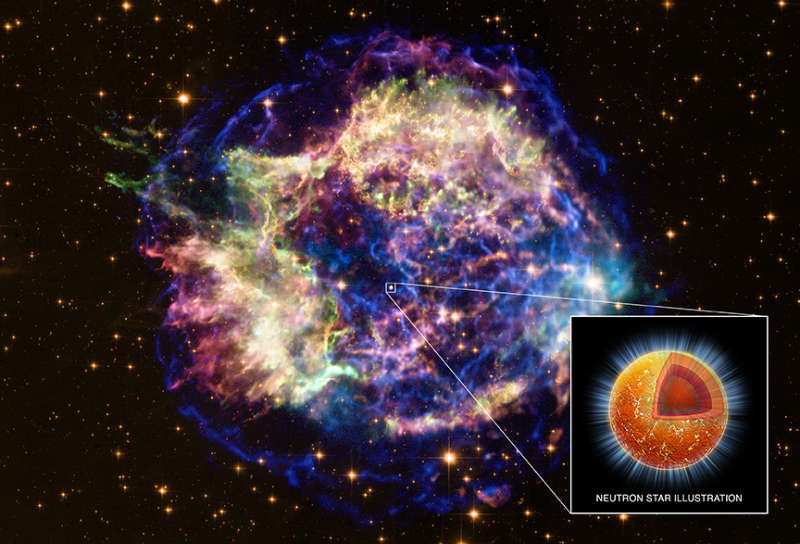Credit & Copyright: NASA/CXC/M.Weiss)
Explanation:
Supernova remnant
Cassiopeia A (Cass A) is a
comfortable
11,000 light-years away.
Light from the Cass A supernova,
the death explosion of a massive star,
first reached Earth just 330 years ago.
The expanding debris cloud spans about 15 light-years in
this composite
X-ray/optical image,
while the bright source near the center is a
neutron star
(inset illustration)
the incredibly dense, collapsed remains of the stellar core.
Still hot enough to emit X-rays, Cass A's neutron star is cooling.
In fact, 10 years of observations with the orbiting
Chandra X-ray observatory find that
the
neutron star is cooling
rapidly, so rapidly that researchers suspect a large part of
the neutron star's core is forming a frictionless
neutron superfluid.
The Chandra results represent the first observational evidence for this
bizarre state of matter.
1999 2000 2001 2002 2003 2004 2005 2006 2007 2008 2009 2010 2011 2012 2013 2014 2015 2016 2017 2018 2019 2020 2021 2022 2023 2024 2025 |
Yanvar' Fevral' Mart Aprel' Mai Iyun' Iyul' Avgust Sentyabr' Oktyabr' Noyabr' Dekabr' |
NASA Web Site Statements, Warnings, and Disclaimers
NASA Official: Jay Norris. Specific rights apply.
A service of: LHEA at NASA / GSFC
& Michigan Tech. U.
|
Publikacii s klyuchevymi slovami:
supernova remnant - Cas A - neutron star - ostatok Sverhnovoi - neitronnye zvezdy
Publikacii so slovami: supernova remnant - Cas A - neutron star - ostatok Sverhnovoi - neitronnye zvezdy | |
Sm. takzhe:
Vse publikacii na tu zhe temu >> | |
